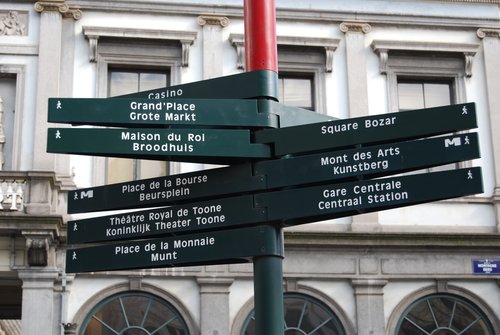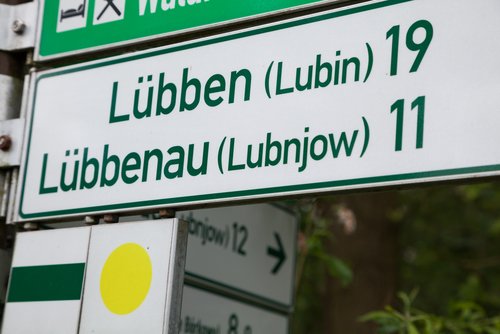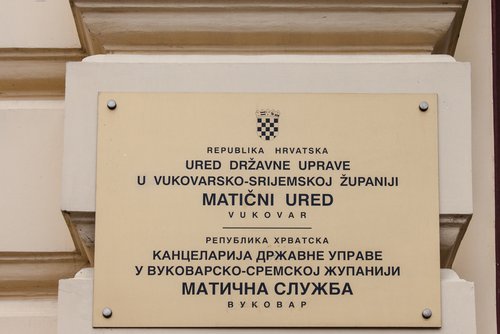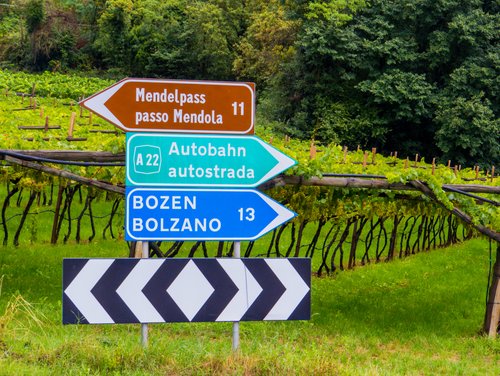ECMI Minorities Blog. The Symbolic Power of Place Names: Why having multilingual signs can be challenging?





Author: Dr. Ljubica Djordjević
The recently published Fifth Opinion on Denmark by the Advisory Committee on the Framework Convention for the Protection of National Minorities (FCNM) attracted remarkable attention in the Danish media and in the border region because it again pointed out the lack of bilingual signs in the four municipalities in Southern Jutland. Among four recommendations for immediate action, the Advisory Committee has urged the authorities to “create an environment conducive to the display of bilingual signs at the entrance of the four municipalities traditionally inhabited by a substantial number of persons belonging to the German minority”. The problem (absence) of bilingual signs is persistent in the Danish case, and interestingly enough it appears to be a major unresolved issue with regards to the protection of the German minority in Denmark.
Difficulties with the bilingual place names are not Danish exclusivity: there are a handful of examples throughout Europe indicating that the issue goes beyond the simple placement of a road sign. In some cases, the legal basis for posting bilingual signs exists, but the implementation in practice is lacking or inconsistent. The most extreme examples in this respect can be found in Croatia or, until recently, in Austria. Posting bilingual signs with Serbian language and Cyrillic script in the Croatian city of Vukovar has created massive opposition and protests, and was eventually suspended. In Austria, the problem of bilingual (German-Slovenian) signs in Carinthia persisted for decades since the so-called “Ortstafelsturm” in 1972 and only in 2011 did the amendments to the law on national minorities bring some closure to the issue. In many countries with no significant problems with bilingual signs, the implementation gap nevertheless exists and there are still municipalities that are not properly displaying bilingual signs, even though the criteria set out in the law are fulfilled. There are also some countries in which bilingual signs (using minority language) are simply a no go, even at the statutory level. Some examples include Bulgaria, Latvia and Lithuania, although in the latter case bilingual signs can be sporadically found, despite clear legal provision prescribing state language only. The issue of place names and bilingual signs arose even in France, a country that is generally known for strongly opposing the concept of national minority protection. The Breton activism against suppression of Breton and francophonisation, among other actions, entailed defacing of (monolingual French) road signs, a frequent action in the 1980s. It seems that today the issue of Breton signs is solved and widely accepted, but even now disputes arise around place naming and whether it should follow French or Breton tradition.
Against this background the question arises on why it can be so difficult for authorities to post bilingual or multilingual signs (in the minority language and script as well) and/or for local population to accept such signs. In the end it is only a sign, or as the Committee of Experts on the European Language Charter has put it in one of their Reports: “the fulfilment of this undertaking is one of the simplest, in practical terms, among those laid down in the Charter”. Yet, as the examples above show, it is not (always) so simple, and something makes the issue potentially highly divisive.
Naming geographical places is generally not an easy task and at the UN level there as even a special body (UNGEGN) dealing with geographical names. Through a (place) name, a certain meaning is ascertained to a geographical locality by which it ceases to be “a randomly chosen piece of the world” and becomes a place. As such, place names have several functions: as a communication tool facilitating “distinguishing, identifying and locating places in physical space”, but also as “symbols of heritage, identifiers of culture and signifiers of local commodities”. Hence, place names are not only geographical terms, but linguistic symbols with cultural and historical attributes, and a strong emotional dimension.
The minority right to place names (notwithstanding the questions about its quality and justiciability) is part of the language rights. Thus, the core base for the protection of minority place names is linguistic. Two layers are relevant here. First, the protection covers traditional minority place names and is not limited to transcription of majority names in minority languages and scripts. In this vein, minority place names are perceived as part of minority (language) heritage. They demonstrate specific meaning that people belonging to a certain (minority) group attach to a certain geographic locality. As such they are linguistic expressions with cognitive, emotive, ideological, and community-constituting attachments. They are also “a kind of linguistic ancient remains” that provide important hints about the development of the language and its speakers.
The second layer refers to the display of traditional minority place names, where formally posting a bilingual sign with a minority place name is crucial. It is not part of a private freedom of expression, but an act of public authority. In this context, the road signs with traditional minority place names are specific “manifestations of language in space”. Bilingual (or multilingual) signs are one of the ways to make minority language(s) visible in the public domain and serve, to some extent, as recognition of the minority language as part of a local language space. This contributes to releasing minority language(s) beyond private use and making it/them part of a public space. This is very important way of breaking the tendency to keep and recognize minority language as means of private communication of a specific group of people (persons belonging to minority), whereas public, official communication is conducted in the language of majority. Consequently, to some extent, topographical indications lessen the privilege of a majority language and its domination in the public space, while recognizing minority language as one of the languages of the public communication.
The crucial principle behind the minority right to place names is territoriality, i.e. this right is limited to an area traditionally inhabited by persons belonging to a national minority in sufficient numbers. Minority place names and particularly signs displaying them are specific ‘territorial markers’ that demonstrate and recognize the presence of the minority in the local area and their traditional links with it. However, they do not delimit some sort of exterritorial minority area (notwithstanding possible territorial autonomy arrangements) that is detached from a wider society, regions or the state. As a matter of fact, the display of multilingual signs should in its core be integrative, by indicating that the area does not exclusively belong to neither majority nor minority and instead being a shared ‘ownership’ for both of them. The Advisory Committee on the FCNM strongly promotes this integrative symbolic of the bilingual signs, for the reason that “it conveys the massage that a given territory is shared in harmony by various population groups”.
Both language and territorial-symbolic aspects cause contestation of bilingual signs and urge authorities and the majority population to resist and hamper such displays. On the linguistic level, the issue reflects the tension between the state (majority) language and minority language(s) and a hierarchy between them: some might see that the official language (the language of the majority) can be or is threatened if minority language gets public recognition. Even more extreme is the ‘territorial’ interpretation of the bilingual signs and their symbolic transformation of a geographical place into a political territory. Accordingly, the greatest fear is of territorial claims resulting in border changes or (perceived or real) separatism. Both historical context (wars, occupations and shifting of borders) and political context (interethnic relations and dynamics between majority and minority groups) can aggravate the fears and hamper normalization of the issue of bilingual signs, in the way that diffuses exaggerated symbolism.
Authorities use different arguments to justify lack of bilingual signs posting: the criteria for placing signs are not fulfilled (lack of a substantial number of persons belonging to national minority in the area in question or insufficient demand); a municipality is unable to reach political majority to make a decision; the competence on the issue is unclear; the action would create a significant financial burden; or the signs would violate traffic regulations. However, the core of the disputes around bilingual signposts is about dominance and power-struggle (even if only at the symbolic level), as well as fears of separatism, border change or an imaginary threat to the spiritual core of the nation, by the majority; and of assimilation, exclusion and/or subordination, by the minority.
Taking into account the symbolic connotations of minority place names and bilingual signs, the question remains on how to normalize the issue so that it becomes widely accepted and uncontested. Certainly, the challenge of place names and their display cannot be reduced to a purely technical issue and stripped of the symbolic attachments and affections. Yet, the question is, which symbols, attachments and affections are transposed in minority place names. To address this requires a change of paradigm and dominant associations with the minority place names. Instead of being perceived as a threat to the state sovereignty and territorial integrity, national unity, and cultural heritage of the majority, they should be accepted as manifestations of shared ownership over wider (local) community, the respect for diversity, community interactions and as a common multilayered cultural heritage. To achieve this, efforts from both the majority and minorities are needed, alongside flexibility and a change of the entrenched mindset.





